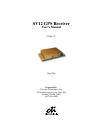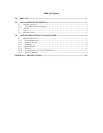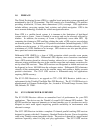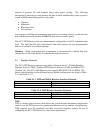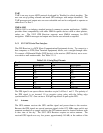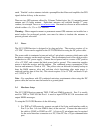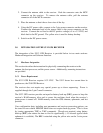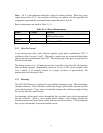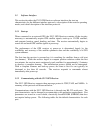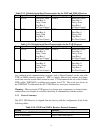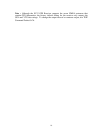2. Connect the antenna cable to the receiver. Push the connector onto the MCX
connector on the receiver. To remove the antenna cable, pull the antenna
connector off of the MCX connector.
3. Place the antenna so that it has a clear view of the sky.
4. Using the DC power cable, connect to the 3-pin power connector on the receiver.
Connect the terminated end of the power cable to the power connector on the
receiver. Connect the red lead to the DC positive voltage (+9 to +32 VDC) and
black lead to the DC ground. The yellow wire is used for battery backup.
5. Switch on the DC power source.
3.0 INTEGRATION OF THE SV12 GPS RECEIVER
The integration of the SV12 GPS Receiver is provided below in two main sections:
Hardware Integration and Software Interface.
3.1 Hardware Integration
This section describes the instruction for physically connecting the receiver to the
antenna, the host processor, and the power source. Additionally, mounting instructions
are provided.
3.1.1 Power Requirement
The SV12 GPS Receiver requires 9-32 VDC. The SV12 draws less current than its
predecessor, the SV8 GPS Receiver.
The receiver does not require any special power up or down sequencing. Power is
supplied through the 3-pin Conxall connector.
The SV12 GPS receiver provides an input for battery back-up (BBU) power to keep the
receiver’s RAM memory alive and to power the real-time clock when the receiver’s
prime power is turned off. RAM memory stores the GPS almanac, ephemeris, and last
position.
User configuration data, including port parameters and receiver processing options, can
be stored in non-volatile EEROM which does not require back-up power. This is done
by issuing appropriate TSIP or TAIP commands. Though not required, using battery
back-up (BBU) can reduce the time to first fix significantly. (~10 seconds typical when
ephemeris is available). The BBU is attached using the yellow wire on the 3-wire power
connector.
5



